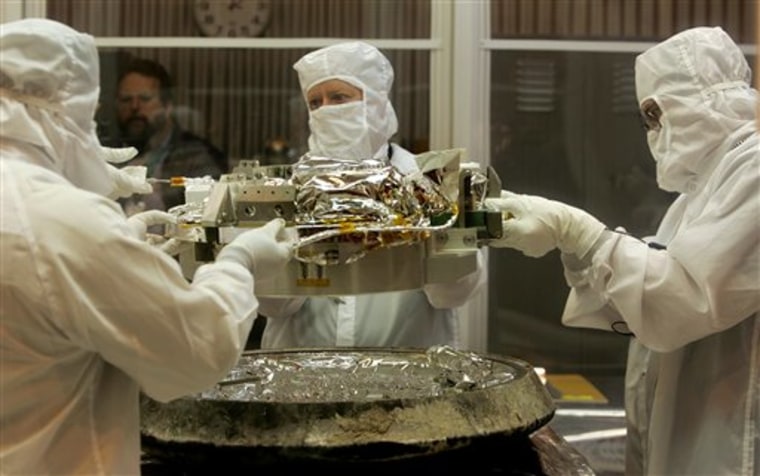The Stardust space capsule arrived Tuesday at NASA’s Johnson Space Center, where scientists plan to unlock its internal canister to analyze the first comet particles ever captured in space.
Technicians at Utah’s Dugway Proving Ground had readied the capsule Monday for its trip to Houston after it survived a fiery plunge through the atmosphere early Sunday. It bounced three times in soft mud before coming to rest on its side.
The landing chipped off a piece of the spacecraft’s heat shield, but the capsule and its canister were in otherwise good shape, said Joe Vellinga of Lockheed Martin, which built the capsule.
The cosmic samples were gathered as the Stardust spacecraft swooped past a comet known as Wild 2 in 2004. The spacecraft, which was launched in 1999, used a tennis racket-sized collector mitt to snatch the dust particles.
At the Johnson Space Center, scientists will unlock the sample canister. After a preliminary examination, they hope to ship the particles to laboratories all over the world for study to analyze their composition.
“This (landing) is not the finish line. This is just the intermediate pit stop,” said project manager Tom Duxbury of the Jet Propulsion Laboratory in Pasadena, Calif., which managed the $212 million mission.
The canister is believed to hold about a million tiny comet and interstellar dust particles. They are thought to be pristine leftovers from the formation of the solar system about 4.5 billion years ago. Some samples could be even older than the sun.
“Inside this thing is our treasure,” said principal mission scientist Don Brownlee of the University of Washington.
Stardust and Genesis were the first robotic retrievals of extraterrestrial material since the unmanned Soviet Luna 24 in 1976, which brought back lunar rocks and soil.
Six months ago, NASA sent the Deep Impact probe into the path of another comet. The probe’s high-speed collision with comet Tempel 1 set off a celestial fireworks display and bared the comet’s primordial interior.
